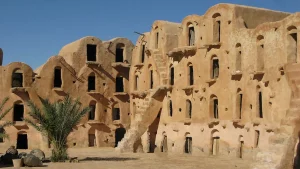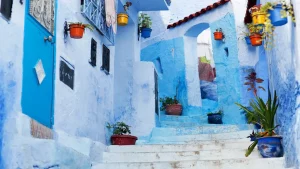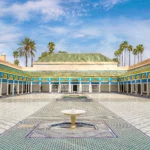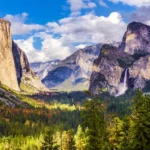Located near the town of St. Catherine on the Egyptian Sinai Peninsula, Mount Sinai is known by many different names: Har Sinai, Mount Moses, Mount Horeb, Jabal Musa… these are just a few of the nicknames given to the mountain in Christian, Jewish and Islamic literature. One thing all three religions agree on, however, is that this is the mountain where God appeared to Moses and gave him the Ten Commandments. The Prophet Muhammad also visited Mount Sinai in the sixth century, making it a place of pilgrimage for members of all three religions.
For secular visitors, a hike up Mount Sinai is rewarded with a breathtaking view of the surrounding desert landscape.
History of the mountain
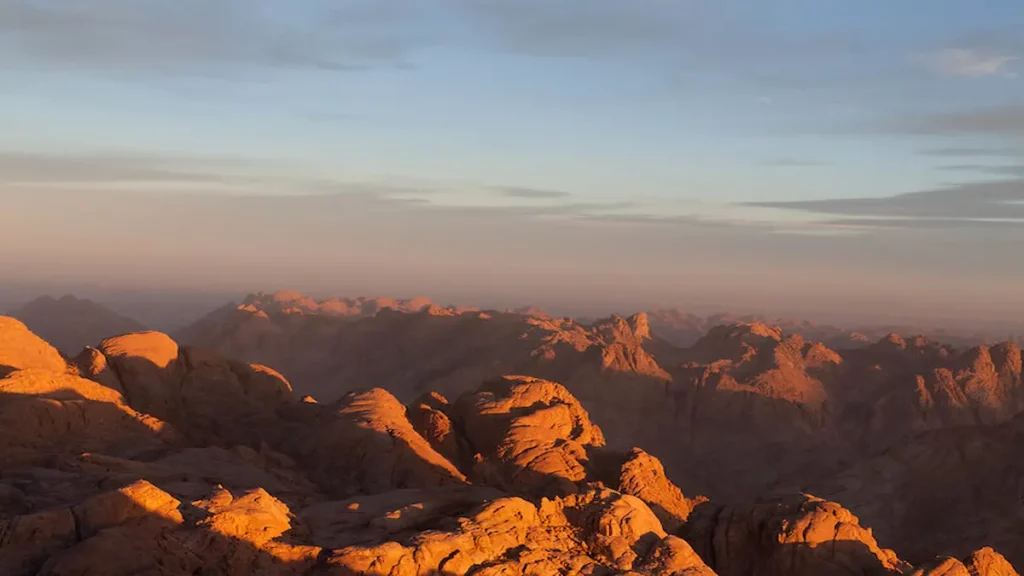
There is no archeological evidence that the mountain, which is 2,285 meters high, is the mountain that Moses visited over 3,000 years ago. Some scholars debate its identity because of different interpretations of the route the Israelites took on their exodus from Egypt, yet the consensus in the traditions of the three churches is that it is the holy mountain mentioned in the Scriptures.
Moses is said to have ascended it twice: once when the voice of God spoke to him from the Burning Bush, commanding him to return to Egypt and free his people, and again when he received the Ten Commandments.
The belief in the sacred status of Mount Sinai was established around the 3rd century when Christian hermits began to settle in caves on its slopes. The monastery of St. Catherine was built at the northern foot of the mountain in the 6th century.
Hiking on Mount Sinai
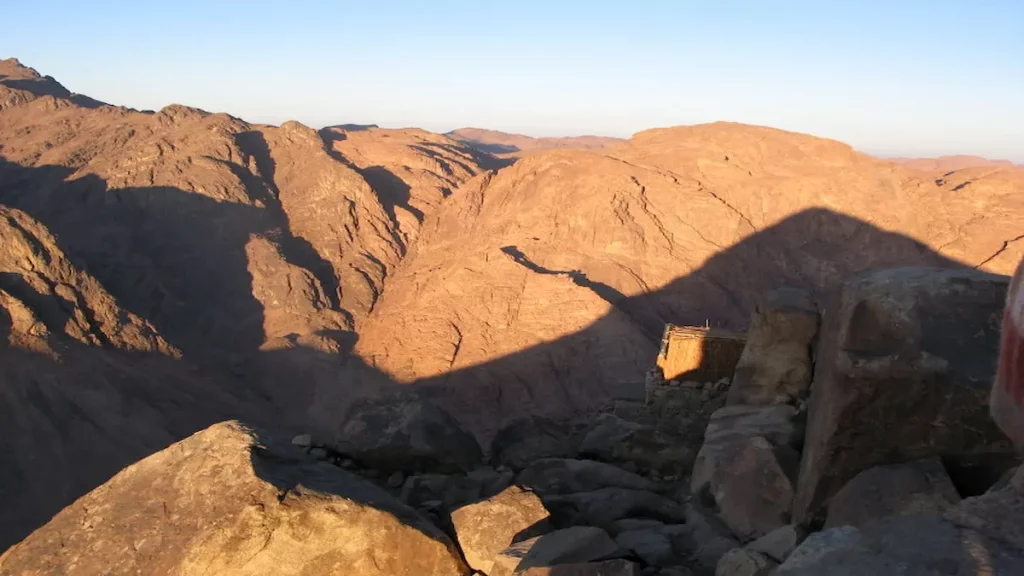
There are two main routes to the top of Mount Sinai, both starting from the parking lot of St. Catherine’s Monastery. It is mandatory to walk with a local Bedouin guide; you will find them at the trailhead. Both routes offer spectacular views of the surrounding desert peaks and valleys, including Mount St. Catherine, the highest mountain in Egypt.
The original route is known as the “Steps of Penitence” and has 3,750 steps hand dug into the ravine behind the monastery in the 6th century. Steep and uneven, this route is only for the very fit, although the views along the way are worth the effort.
The second route is known as the “Camel Trail”. It was built in the nineteenth century and provides a longer and more gradual rise. It takes about two hours on foot, although it is possible to ride a camel from the beginning of the trail to the point where the camel trail joins the penitential steps for the last 750 steps to the summit, which are quite high.
The relics of chapels constructed to honor numerous saints and prophets litter the hillside. One of the most famous is located in a natural basin below the summit and is dedicated to the prophet Elijah. It was constructed on the place where he is claimed to have received God’s revelation.
Visiting Mount Sinai: What to do at the top
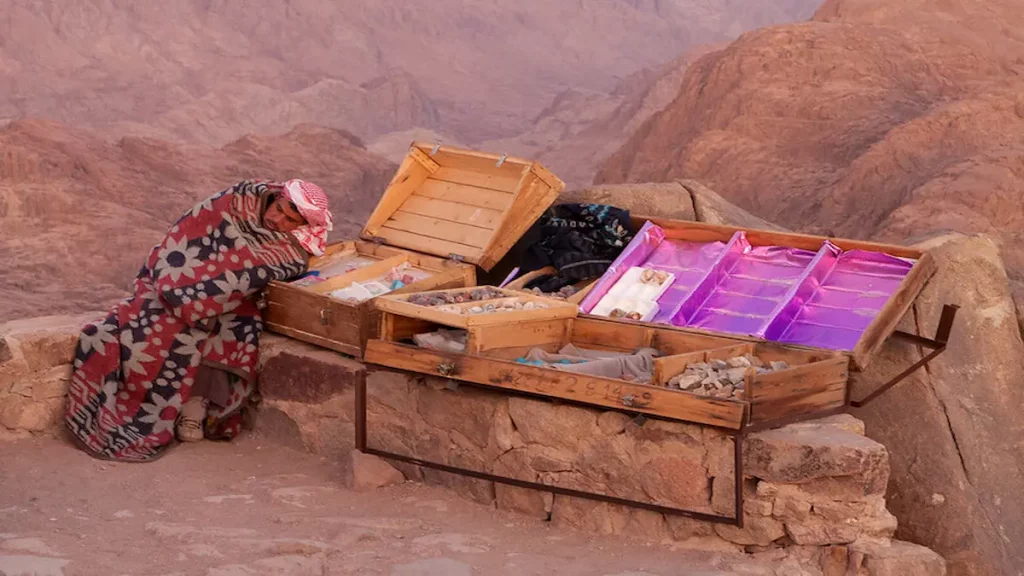
Once you’ve had your fill of appreciating the view from the top, there are various historical areas of significance to visit. One is a mosque still used by local Muslims; the other is a Greek Orthodox chapel (below) dedicated to the Holy Trinity that was built in 1934 on the ruins of a basilica built by Emperor Justinian in the 6th century. The chapel is said to contain the rock from which God created the tablets of the law; however, it is no longer open to the public.
Other sites atop Mount Sinai include two caves associated with Moses’ visits to the mountain. One is the cave in which God hid Moses to protect him from His glory when He gave the commandments to Moses.
Visit St. Catherine’s Monastery
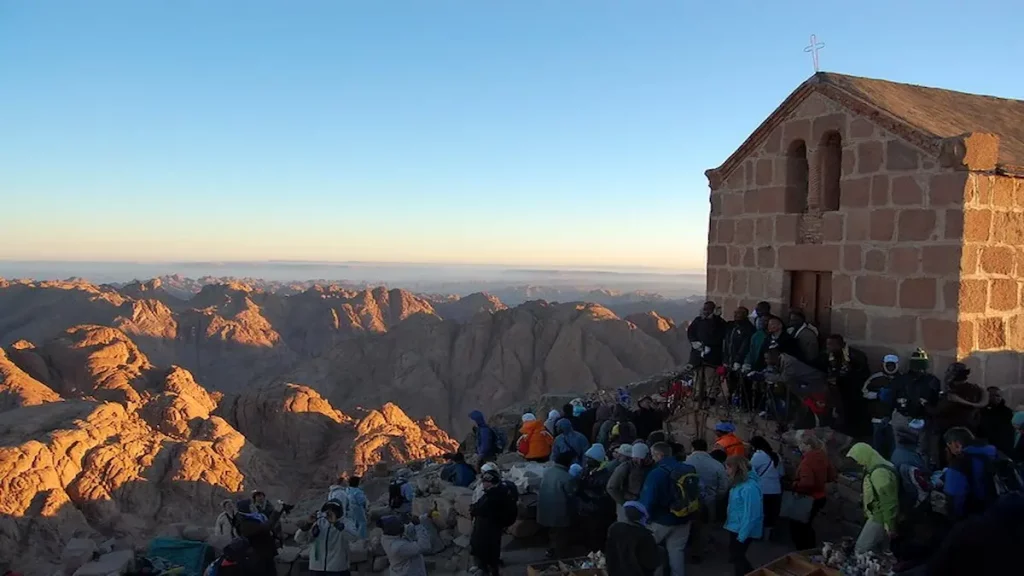
A visit to Mount Sinai would not be complete without a visit to St. Catherine’s Monastery. The fortified complex that exists today was built in 530 by Emperor Justinian and is an excellent example of Byzantine architecture. It was built to protect an ancient chapel, erected by the Roman Empress Helena in 330 on the site where Moses encountered the Burning Bush. Constantine’s mother, Helena, was the emperor who legalized Christianity throughout the Roman Empire.
It is believed that the Burning Bush was a rare species of bramble (Rubus Sanctus), which still grows in the monastery grounds and is believed by its monks to be the same one that God spoke to Moses about.
The original Church of the Transfiguration, several tiny chapels, a museum, and a library are all part of the monastic complex. St. Catherine’s also housing the Orthodox Church of Mount Sinai monks who still live there, making it one of the world’s oldest continually inhabited Christian monasteries. Many rare antiquities, including relics of St. Catherine, are housed there.
According to Christian tradition, the remains of the martyr were taken by angels to the top of nearby Mount St. Catherine after her death, where they were discovered by some monks of the monastery in the 4th century. Only on special occasions are the relics (including the saint’s beheaded head and left hand) brought out.
The museum houses a world-renowned collection of early religious art, including several very rare icons from the 5th and 6th centuries. The library is one of the oldest in the world, and it is only surpassed in terms of the amount of early Christian codices and manuscripts it possesses by the Vatican Library. The Codex Sinaiticus, the oldest known manuscript of the Bible, was one of them.
A German biblical researcher discovered the majority of this manuscript in the monastery in 1859, and it was later sold to Tsar Alexander II of Russia. The Soviet government in turn sold it to the British Museum, where it has remained on public display since 1933. Fragments of the Codex Sinaiticus, however, can still be seen at St. Catherine’s Monastery.
How to visit Mount Sinai
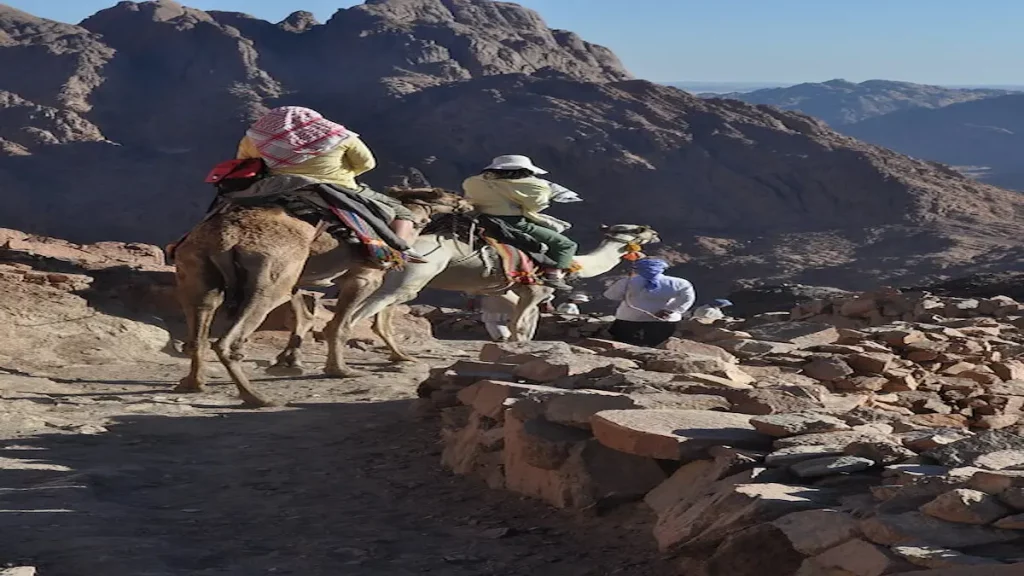
In the past, pilgrims wishing to visit Mount Sinai and the monastery would have made a grueling eight-day trek from Cairo on foot and camelback. Modern travelers, on the other hand, will find the area considerably more accessible thanks to an airstrip and paved roads created during Israel’s mid-century occupation. Many travel agencies offer day trips from the popular Red Sea resorts of Dahab (1 hour 45 minutes away) and Sharm el-Sheikh (2 hours 30 minutes away). Look on Viator or ask your hotel or travel agent for the best options.
As a rule, visitors climb the camel trail in the dark to reach the top in time for sunrise. You can then return via the same path or descend the more scenic Penance Steps.
It is also feasible to ascend the mountain in time for sunset for a less crowded experience.
However, the Penance Steps are dangerous in the dark, so hikers who choose this option must either ascend and descend via the camel trail or climb the steps in daylight. For those who want to spend the night on the mountain, there is a campsite at Elijah’s Basin.
Mount Sinai can be visited year-round. Hikers should be aware that the weather can be cold and windy even in the summer (especially before sunrise), while winter often sees subzero temperatures and even light snowfall. So bring warm clothes and be very careful on walks in cold or wet weather. St. Catherine’s Monastery is open from 9:00 a.m. to 11:30 a.m. every day except Fridays, Sundays, and religious holidays. Since this is a functional place of worship, visitors should dress modestly; that means no shorts and no bare shoulders.
- Also Read: Travel with Baby 10 Useful Tips


